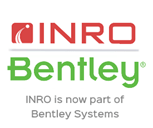Ensemble modelling as a tool for exploring uncertainty
Hamish Thomas
Arup, Western Australia
This presentation was delivered at the 2021 Online Conference Series and until October 2022 is only available to registered delegates and Content Access Pass holders via Interchange. For information on accessing this and other presentations please review the Content Access Pass options.
ABSTRACT
Computational modelling informs many aspects of government policy and decision making. During the Covid-19 pandemic, high-profile predictions of infection rates led many to question the fundamental assumptions within models (Saltelli, et al., 2020), and re-evaluate their function in relation to government policy.
Uncertainty in modelling can originate from many sources, including, but not limited to, data collection, modelling methodologies or forecast variables. Calder et al. (2018) criticise modelling practice for failing to convey uncertainty inherent within results.
This study examines the four-stage model response to changes in key assumptions. Specifically, this study varied trip generation rates and observed changes to aggregate results. To do this an ensemble model was constructed with independent models run with a unique trip generation rate.
Model run times were a key concern when constructing the ensemble. To achieve a practical solution, a number of methodology simplifications were applied. A key adaptation is the utilisation of a radiation model in-place of a gravity model to determine trip distribution.
The ensemble is constructed entirely within Python using the open-source Quetzal library. The python platform provides the flexibility to implement an innovative methodology whilst retaining high computational performance.
The results of this study provide an insight into the variance of model outputs which occur as a result of the four-stage model methodology. Quantifying this uncertainty provides value to decision makers in increasingly uncertain times.
Calder, M. et al., 2018. Computational modelling for decision-making: where, why, who and how. Royal Society open sci.
Simini, F. et al., 2012. A universal model for mobility and migration patterns. Nature, Volume 484, pp. 96-100.
Author
Hamish Thomas | Arup
Hamish Thomas is a Transport Planner based in Perth with a range of transport modelling experience in both Australia and the UK. Hamish is interested in developing tools that bring transport modelling and decision makers closer together.
Hamish is passionate about open-source software and leveraging big-data tools to explore modelling questions in greater detail.
Previously conducting research into the use of Agent-Based Models, his current research has been developed in response to concerns about model complexity and the need to explore unknowns within the results.







